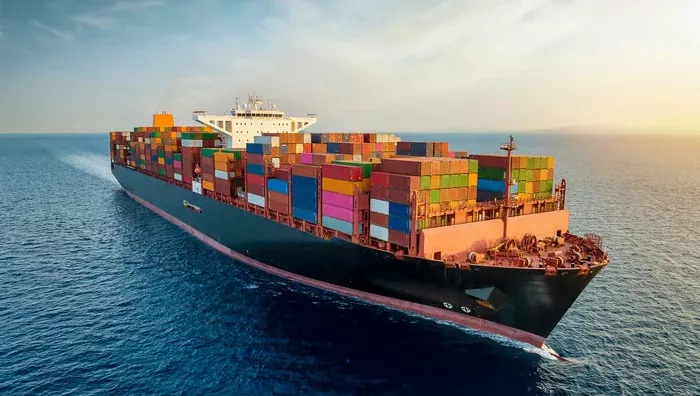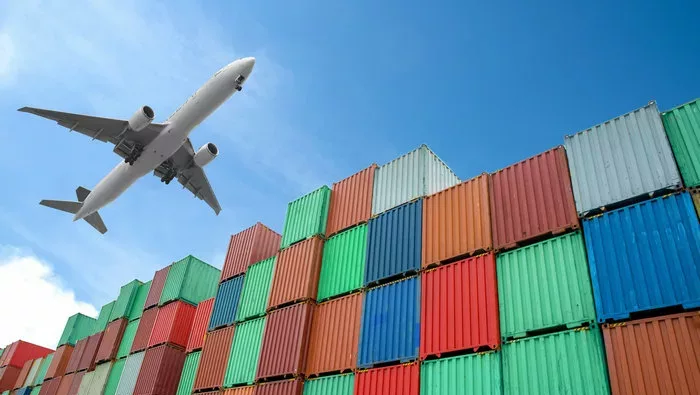Resources
Explore top logistics resources for importers and exporters: international shipping guides, tools, checklists, and tutorials to streamline your trade.
DAP vs DDP: Key Differences, Responsibilities, and Costs

By Yoyo Shi / 2025-08-29
When it comes to international shipping, two incoterms often cause confusion: DAP (Delivered at Place) and DDP (Delivered Duty Paid). Both define freight trade details about expense ,regulation and procedures, but they do so in very different ways. Choosing the right incoterm can affect cash flow, pricing strategy, and even how...
Read More »How to Negotiate Better Freight Rates | LuckyStar Logistics

By Yoyo Shi / 2025-08-27
Freight costs often make up a large share of logistics expenses, so knowing how to negotiate rates can directly improve profitability. The key to negotiating freight rates is understanding costs, market conditions, and the value each party brings to the table. This process involves more than just asking for lower...
Read More »How to Calculate Shipment Volume in Freight

By Yoyo Shi / 2025-08-25
Shipping costs often depend less on weight and more on how much space a package takes up. To calculate shipment volume, multiply the length, width, and height of the package and convert the result into cubic meters (CBM). By understanding the formulas, conversion rules, and tools available, anyone can easily compare...
Read More »3 Types of Bill of Lading: A Guide for Shipping Documentation

By Yoyo Shi / 2025-03-31
When shipping goods, you need to understand the paperwork involved. A bill of lading is one of the most important documents in the shipping process. Whether you're new to shipping or looking to brush up on your knowledge, knowing these basic types will give you a solid foundation. Definition of...
Read More »Shipping from China to Los Angeles: Methods, Processes & Tips

By Yoyo Shi / 2025-03-24
Shipping your goods from China to Los Angeles continues to be one of the busiest trade routes in the world. This guide covers shipping methods, processes, and tips to help you navigate the journey smoothly. Methods for Shipping from China to Los Angeles When shipping goods from China to Los...
Read More »Shipping from China to Seattle: A Guide to Fast Transport

By Yoyo Shi / 2025-03-21
Shipping goods from China to Seattle is a popular route for international trade. Understanding the shipping process is essential for ensuring efficient shipments. Why Choose the Port of Seattle for Shipping from China? The Port of Seattle is one of the busiest ports in the U.S. and a crucial hub...
Read More »Shipping from Guangzhou to USA: A Guide to Freight Shipping

By Yoyo Shi / 2025-02-27
Shipping goods from Guangzhou China to the USA needs strategic planning. Understanding shipping methods, transit times, costs, and customs regulations is crucial for a smooth and cost-effective delivery. Introduction to Shipping from Guangzhou to the USA Guangzhou is a major shipping hub in China, boasting advanced port facilities and extensive...
Read More »Shipping from Shenzhen to the USA: Methods and Costs

By Yoyo Shi / 2025-02-13
As China’s leading manufacturing and tech hub, Shenzhen serves as a critical gateway for global trade. This guide explores popular shipping methods, routes, transit times, and documentation. Method Cost Transit Time Best For Air Freight $3–$7/kg 3–7 days High-value, urgent goods Express Shipping $5–$10/kg 3–5 days Small parcels FCL Shipping $3,000–$7,000/container 18–35 days Bulk...
Read More »Shipping from Shanghai to USA: Methods, Costs & Best Practice

By Yoyo Shi / 2025-02-08
Method Route Example Transit Time Estimated Cost Air Freight Shanghai (PVG) → Los Angeles (LAX) 3–5 days $5–7/kg Express Door-to-door with Luckystar 2–5 days $10–15/kg FCL Ocean Shanghai Port → LA/Long Beach 20–30 days $2,500–$4,500 per container LCL Ocean Consolidated via Ningbo/Shenzhen 30–45 days $80–150/m³ Transportation Methods from Shanghai to...
Read More »3PL Vs 4PL: How to Choose for Your Business?

By Yoyo Shi / 2024-12-11
Key Takeaways 3PL providers focus on specific logistics tasks like shipping and warehousing. 4PL providers manage the whole supply chain, including 3PL services. 3PL: Handles specific tasks Focuses on day-to-day operations Works directly with your company 4PL: Manages the whole supply chain Develops long-term strategies Coordinates multiple partners Different Logistic...
Read More »GRI Meaning in Shipping: Global GRI 2025 | Lkylog

By Yoyo Shi / 2024-11-12
What is General Rate Increase (GRI) in Shipping? A General Rate Increase (GRI) refers to a standardized increase in shipping rates that applies across all shipments, regardless of the service level or type of cargo. This increase is typically announced in advance and is intended to offset rising operational costs...
Read More »Landed Cost Definition: Meaning and Calculate | LuckyStar Logistics

By Yoyo Shi / 2024-11-07
What is Landed Cost? Landed cost is the total price you pay to get products to the door, including shipping, taxes, and other fees. Components of Landed Cost Landed cost is more than just the price you pay for the products themselves. It includes a variety of expenses that happen...
Read More »THC Meaning in Shipping: Understanding Terminal Handling Charges

By Yoyo Shi / 2024-09-23
What Does THC Mean in Shipping? Terminal Handling Charges (THC) are fees you often encounter when dealing with shipping, particularly at ports. These costs are linked to the necessary handling of goods, including aspects such as loading, unloading, and storage. When shipping goods, THCs are vital fees imposed by port authorities....
Read More »VGM Meaning in Shipping | How to Determine Verified Gross Mass?

By Yoyo Shi / 2024-09-23
In this article, Luckystar will explain the meaning of VGM in shipping, exploring its significance, the regulations surrounding it, and the methods used to determine it. Whether you're a seasoned logistics professional or new to the shipping industry, understanding VGM is essential for ensuring compliance, preventing accidents, and maintaining the...
Read More »What is Project Logistics and What Should Be Pay Attention?

By Yoyo Shi / 2024-09-10
Moving a single package across town is one thing, but orchestrating the movement of oversized cargo, specialized equipment, and intricate materials across continents for major projects is an entirely different ballgame. This is where project logistics steps in, tackling logistical challenges that are often as big as the projects themselves. ...
Read More »DAT Incoterms Explained: What is Delivery at Terminal

By Yoyo Shi / 2024-08-29
Incoterms, short for International Commercial Terms, are globally recognized rules created by the International Chamber of Commerce (ICC). They help standardize contracts in international trade. These terms define the responsibilities of buyers and sellers. They cover delivery, risks, and costs. You can think of them as a guide to what...
Read More »What is ISPS Code: International Ship and Port Facility Security

By Yoyo Shi / 2024-08-26
Understanding the ISPS Code is essential for anyone involved in international maritime operations, from ship owners and operators to port authorities. In this article, we will explore the key aspects of the ISPS Code, including its objectives, scope, and implementation requirements. We'll discuss who needs to comply with the code,...
Read More »Understanding USPPI: Definition and Its Role in Trade Explained

By Yoyo Shi / 2024-08-23
This article will clarify what USPPI means in trade, explore its specific responsibilities, and highlight the distinctions between USPPI and exporter, helping you navigate the complexities of exporting from the United States. What is USPPI? In 2000, the U.S. Census Bureau revised the Foreign Trade Regulations (FTR) and substituted the...
Read More »Shipping Container to USA with Luckystar Logistics

By Yoyo Shi / 2024-07-31
Navigating the complexities of international shipping can be a daunting task for businesses and individuals alike. Whether you're moving goods from Europe or China to the United States, understanding the costs and timelines involved is crucial for effective planning and budgeting. We'll delve into the varying costs associated with container...
Read More »Largest Port in US: A Bustling Hub of Commerce

By Yoyo Shi / 2024-07-30
When you think about the largest ports in the United States, a few names stand out. One of the most famous ports is the Port of Los Angeles. It's the biggest container port in the U.S. Each year, millions of TEUs (twenty-foot equivalent units) pass through this port. Right next...
Read More »Shipping Terms Meaning: A List of Common Shipping Terms Every Seller Needs to Know

By Yoyo Shi / 2024-07-04
What are Shipping Terms? Shipping terms are specific terms and conditions that define the responsibilities, risks, and costs associated with the transportation of goods from the seller to the buyer. These terms are crucial in international trade as they help prevent misunderstandings and disputes. The most commonly referenced shipping terms...
Read More »What is a HS Code for Shipping?

By Yoyo Shi / 2024-07-04
What is the Harmonized System (HS) Code? The Harmonized System (HS) codes are a crucial element in international trade. These codes help classify products and ensure smooth customs processes across borders. An HS code typically consists of six digits. These numbers are standardized globally, making it easier for customs officers...
Read More »What Is Blind Shipping? A Complete Guide to Blind Shipment

By Yoyo Shi / 2024-07-04
What is Blind Shipping Blind shipping is a logistics practice that hides the identity and address of either the shipper, receiver, or both during the shipping process. It's commonly used in e-commerce and dropshipping to protect business relationships and maintain competitive advantages. In a blind shipment, the shipping label and...
Read More »Understanding the Sea Freight Shipping Process Flow: A Comprehensive Guide for Import Logistics

By Yoyo Shi / 2024-02-06
Sea freight is a critical component of global trade, enabling the transportation of large quantities of goods over vast distances. As you explore this method of transport, you will find that it involves a series of coordinated steps and processes to ensure cargo is moved efficiently from the point of...
Read More »What is MSDS in Shipping: Learning Glossary for Dangerous Goods and Hazardous Substances

By Yoyo Shi / 2023-10-27
Unveiling MSDS When you're involved in shipping, it's essential to be familiar with Material Safety Data Sheets (MSDS), also known as Safety Data Sheets (SDS) under the Globally Harmonized System of Classification and Labeling of Chemicals (GHS). MSDS meaning in shipping is a document that provides comprehensive information about the...
Read More »Standard Pallet Size: Key Dimensions and Applications in Industries

By Yoyo Shi / 2023-10-27
Overview of Standard Pallet Size Concept of Standard Pallet Sizes When it comes to handling and shipping goods, having a proper understanding of pallet sizes is essential. Standard pallet size is a widely accepted measurement that ensures uniformity across the industry. Standardization of pallet sizes plays a crucial role in the...
Read More »What is the Shipping Packing List and How to Fill Out

By Yoyo Shi / 2023-10-18
What is the Packing List for Shipment When it comes to international trade, a shipping packing list is a crucial document that provides important information about the shipment. A packing list is a detailed document that outlines the contents of a shipment, including how it is packed, the number of...
Read More »FOB vs. CIF: Key Differences Explained Clearly and Concisely

By Yoyo Shi / 2023-10-12
When it comes to international trade, choosing the correct shipping terms is essential for ensuring a smooth and successful transaction. Two of the most common shipping agreements used in global trade are Free on Board (FOB) and Cost, Insurance, and Freight (CIF). Both terms, part of the Incoterms established by...
Read More »China Certificate of Origin: A Comprehensive Guide for Import and Export

By Yoyo Shi / 2023-10-12
The China Certificate of Origin is a crucial document in international trade, as it certifies that the exported products are wholly obtained, produced, or manufactured within the borders of China. While it may appear as a simple piece of paper, the Certificate of Origin carries significant weight in the world...
Read More »FOB vs. DDP: Understanding Key Differences in Shipping Terms

By Yoyo Shi / 2023-09-26
Understanding the differences between FOB (Free on Board) and DDP (Delivered Duty Paid) is crucial for businesses to make informed decisions in international trade and shipping. These two terms are part of Incoterms (International Commercial Terms), a set of rules that define the responsibilities of sellers and buyers for the...
Read More »SOCs Meaning: A Comprehensive Guide

By Yoyo Shi / 2023-09-26
In the world of shipping and logistics, the term Shipper Owned Container (SOC) refers to a container that is owned by the consignee, rather than the carrier. This approach to container shipping has recently gained popularity due to its various advantages to the shipper. With SOC, the shipper can maintain...
Read More »Net Weight vs Gross Weight: Essential Differences Explained Clearly

By Yoyo Shi / 2023-08-24
In product shipments and logistics, it's crucial to understand the difference between net weight, which refers to the product's weight excluding any packaging, and gross weight, the total weight including its packaging or container. This understanding is vital for accurate shipment management and compliance with transportation regulations. The concept of...
Read More »Oversized Cargo: Essential Tips for Safe and Efficient Transportation

By Yoyo Shi / 2023-08-24
Oversized cargo is frequently used in the shipping and logistics industry to describe shipments that exceed standard dimensions or weights. Such cargo can include large machinery, out-of-gauge equipment, or items that cannot fit within standard-sized shipping containers. Often times, shipping oversized cargo presents unique challenges, requiring specialized handling and transportation...
Read More »What Is Customs Clearance Process and How to Make It Easier

By Yoyo Shi / 2022-12-06
As a business person with plans to make international shipments, you'll have to familiarize yourself with the customs clearance process. Whenever you have to move goods from one country to another, they must pass through the customs clearance office for approval by a customs officer. For international shipments, all goods...
Read More »How to Calculate Chargeable Weight for Air Freight: A Simple Guide

By Yoyo Shi / 2022-12-06
Calculating chargeable weight is an essential aspect of air freight shipments, as it directly impacts the cost of transporting goods. The concept of chargeable weight involves determining whether the actual or volumetric weight is more significant, with the more considerable value used to calculate the shipping fees. You can efficiently...
Read More »Different Pallet Types (by Style, Design and Material)

By Yoyo Shi / 2022-12-06
When transporting and storing goods, placing them on a solid surface, such as pallets made from different materials, is best. Some pallet types you might want to consider as a foundation during storage and transportation include plastic pallets, wooden pallets, and metal pallets. Ideally, pallets ought to be flat and...
Read More »FCL vs LCL Container Shipping: Which Should You Choose?

By Yoyo Shi / 2022-12-06
Ocean freight is undoubtedly one of the most popular ways to ship goods internationally. One reason for this popularity is that sea freight is more cost-efficient, especially for bulky goods than other shipping options. Additionally, it's safe and eco-friendly, and you can use shipping containers for road or rail transportation....
Read More »




































